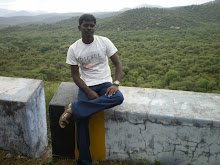Ultrasonic screwdriver to make plastic planes safer
Air Transat flight 961 lost its rudder in a composite explosion (Image: TSB)
When the plastic rudder of a Canadian Airbus airliner exploded off Cuba in March 2005 the aviation industry began waking up to the risks of carbon fibre aircraft structures. Invisibly, water had got into the layers of its carbon composite structure, forming ice at altitude that blasted the rudder structure to pieces. That was followed by FedEx finding that a hydraulic fluid leak had had a similar invisible effect on the tail of one of its reinforced plastic Airbus planes.
The problem? Unlike aluminium which buckles or cracks visibly,
damage to lightweight carbon fibre reinforced plastic (CFRP) - comprising hundreds of layers of epoxy resin shot through with carbon fibre - can remain hidden deep within those layers. Engineers can only tap on it with a small hammer (or even a coin) to listen out for a hollow sound that might indicate trouble within.
Even if a plane is struck on the ground by a catering or luggage truck, structure-weakening damage can often remain invisible - and that's a major-league concern now entire pressurised fuselages, like that of the Boeing 787 and the upcoming Airbus A350, are being made from CFRP.
Now EADS, owner of Airbus, alongside DolphiTech of Norway, are close to developing an answer: an ultrasonic camera gun with which ramp engineers can scan CFRP airplane surfaces to visualise in 3D any damage that's hidden to the eye and/or the ear. Dolphitech say the technology, which fires ultrasound and deduces from the reflections what lies beneath (it's effectively an ultrasonic tap test), is the first to be geared for composite aircraft.
EADS doesn't expect the system to be commercially available until the end of 2012, but you can see from the graphic below what kind of images it will produce. Trained on a series of CFRP drill holes, it's clear that a crack has developed from the top one beneath the surface - something no engineer would have been able to sense from a tap test.
Ultrasound gun shows a hidden crack leading from the top drill hole (Image: EADS)
Air Transat flight 961 lost its rudder in a composite explosion (Image: TSB)
When the plastic rudder of a Canadian Airbus airliner exploded off Cuba in March 2005 the aviation industry began waking up to the risks of carbon fibre aircraft structures. Invisibly, water had got into the layers of its carbon composite structure, forming ice at altitude that blasted the rudder structure to pieces. That was followed by FedEx finding that a hydraulic fluid leak had had a similar invisible effect on the tail of one of its reinforced plastic Airbus planes.
The problem? Unlike aluminium which buckles or cracks visibly, damage to lightweight carbon fibre reinforced plastic (CFRP) - comprising hundreds of layers of epoxy resin shot through with carbon fibre - can remain hidden deep within those layers. Engineers can only tap on it with a small hammer (or even a coin) to listen out for a hollow sound that might indicate trouble within.
Even if a plane is struck on the ground by a catering or luggage truck, structure-weakening damage can often remain invisible - and that's a major-league concern now entire pressurised fuselages, like that of the Boeing 787 and the upcoming Airbus A350, are being made from CFRP.
Now EADS, owner of Airbus, alongside DolphiTech of Norway, are close to developing an answer: an ultrasonic camera gun with which ramp engineers can scan CFRP airplane surfaces to visualise in 3D any damage that's hidden to the eye and/or the ear. Dolphitech say the technology, which fires ultrasound and deduces from the reflections what lies beneath (it's effectively an ultrasonic tap test), is the first to be geared for composite aircraft.
EADS doesn't expect the system to be commercially available until the end of 2012, but you can see from the graphic below what kind of images it will produce. Trained on a series of CFRP drill holes, it's clear that a crack has developed from the top one beneath the surface - something no engineer would have been able to sense from a tap test.
Ultrasound gun shows a hidden crack leading from the top drill hole (Image: EADS)
Subscribe to:
Post Comments (Atom)

No comments:
Post a Comment